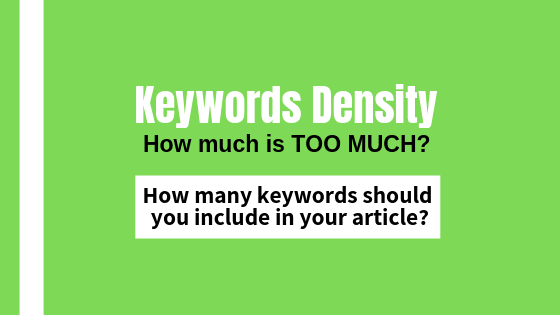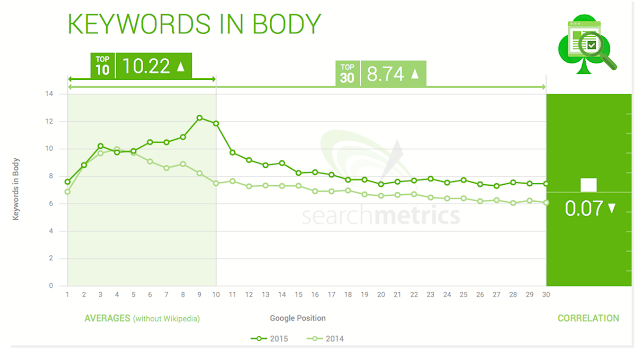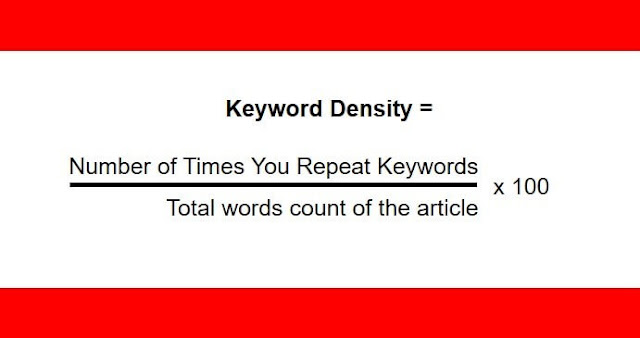Somewhere, deep down inside, we all still believe that adding more number of keywords in a piece of content will help its case on the result page.
Of course, this belief is not entirely true—not at least today when semantic searches have made it to the mainstream.
Google’s RankBrain goes beyond the keywords to find content’s relevancy and resourcefulness with the users’ search queries.
Also Read: How to Optimize for Google RankBrain

This whole thing leads to the next most important question…
What’s a good keyword density percentage? Or how much keyword density is good for SEO?
Because too little might fail to leave a mark and too many might qualify as spam. What’s the ideal number?
What Experts Say About Keyword Density?
Harsh Agarwal of Shout Me Loud uses 1-3 keywords, on average, per 100 words. This doesn’t include LSI keywords. He advises keeping keyword density of around 1.5 percent.
Brian Clark of Copy Blogger says one should keep the keyword density less than 5.5 percent to avoid getting penalized by Google.
Here’s what he says…

Now here’s what Matt Cutts thinks about this topic…

The length of these ranking pages was typically 1,100 to 1,200 words count. This makes their average keyword density anywhere between 0.6 and 0.9 percentage.
What do all these tell you?
The Answer You Always Knew
As frustrating and clichéd it may sound, a correct answer is that there’s no correct answer.

Without worrying about the density and its impact on SEO, you must first write a solid piece of article in the most natural tone.
Move on, then sprinkle in the right keywords wherever it deems fit.
Avoid any instance of forceful inclusion. Never include the hot phrases where they aren’t needed. Because even when you’re doing that for, say, twice in a long-ass article, it might look spam.
Your content is good for as long as the keywords in it have perfectly blended with the rest of the contents. If any phrase stands-out or sounds awkward in the flow—you must edit it immediately.
Google is Smart – It Understands the Synonyms
Even when the risk of being spam is kept aside, there’s no actual reason to use the same phrases over and again unnecessarily.
Like mentioned already, the way search engines rank webpages have shifted from keywords-based to intent-based.
Today, the search bots understand the meaning, synonyms, and intent of keywords very well. They would treat “best food to stay healthy” “healthy foods” “stay healthy food” as equal.
So instead of being redundant with your keywords usage and bore the readers, you must use all the important variations of your primary keywords.
Also, including LSI keywords is no more optional. They can significantly improve your SEO and help a website rank higher.
Read: How To Use LSI Keywords To Boost SEO
How Keyword Density Is Calculated?
We, of course, one cannot end this topic without the mention of this basic question, can we?!
Keyword density formula is pretty plain and simple.

(12/600 * 100)
2 percent.
Of course, to do this calculation, you don’t have to dive into the mathematical nitty-gritty. There are many good tools available online.
Here’s a good density checker, here’s another one, and another one.
In the first two tools, you can paste the URL and check the keyword density percentage. In the last one, you’ll have to paste the chunk of your text in the given box to calculate. All of them are free to use.
My Personal Take
I do want to put my primary keywords multiple times throughout the article. But I never do it unnecessarily. Many times, having used my ‘hot phrase’ even once in 500-words span is more than adequate for me.
However, I do stress on sprinkling LSI keywords to make sure Google understands the relevancy of my content well. And if my numbers are correct, this practice has done well in generating me a good amount of traffic with literally no amount of extra work.
So to sum up:
- Prioritize keyword density—but don’t overdo it.
- NEVER include hot phrases in the content unnecessarily.
- Don’t chase the primary keywords alone—focus on its variants and semantic phrases just as much.
- Do a keyword density analysis of your existing articles using the mentioned tools.
- Fix the posts where you have likely used too many keywords unnecessarily. Reduce the density.
That’s about it. Up to you now!
- Is Low Click-Through Rate Destroying Your SEO Strategy?
- Your Font Is Hurting Your Website Ranking (Fix It!)
- Revamp, Repurpose Your Old Contents to Boost SEO
- Do Outbound Links Help SEO?
- Level-up Your On-Page SEO Game With Whitespace
- How To Use Interactive Contents to Increase SEO Ranking?
- Robots.txt For SEO: How (And Why) You Must Use It
- Website Speed in SEO: Does Your Site Load in 2 Seconds?



